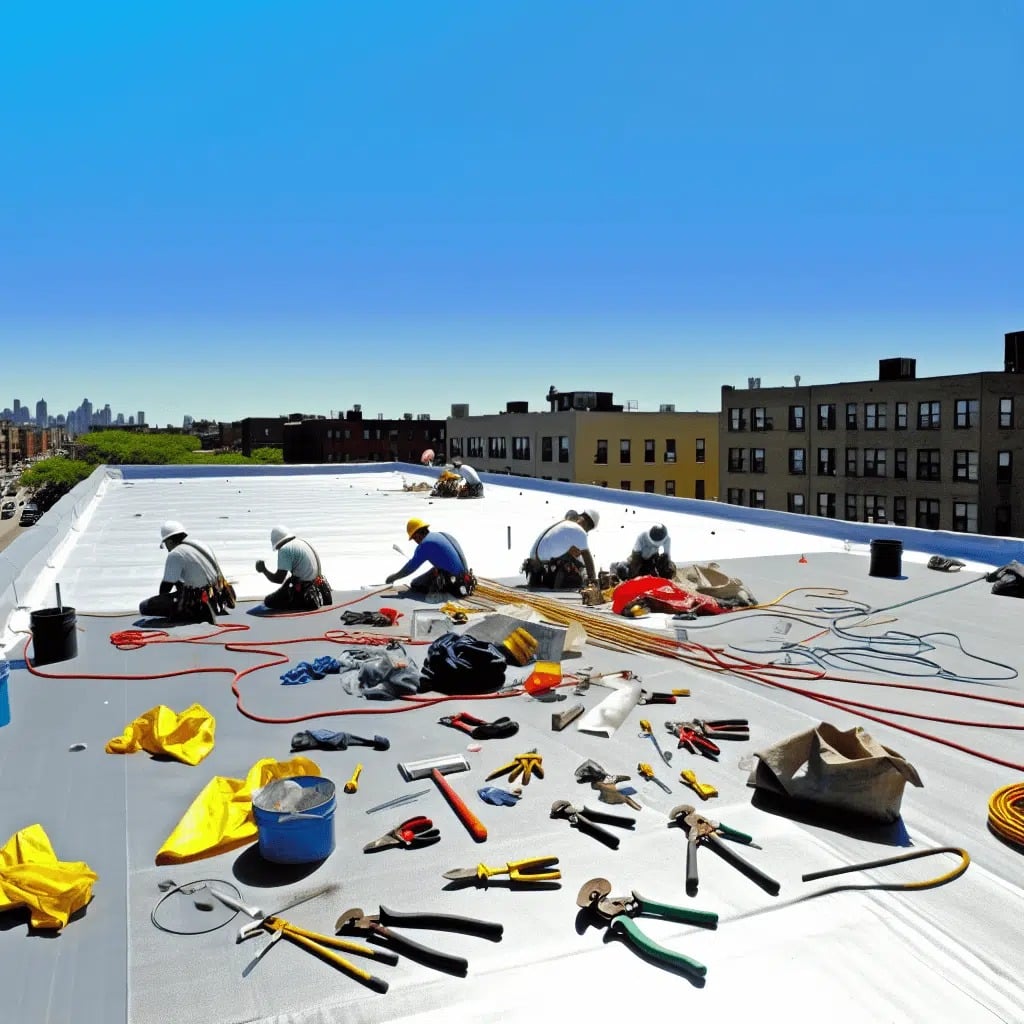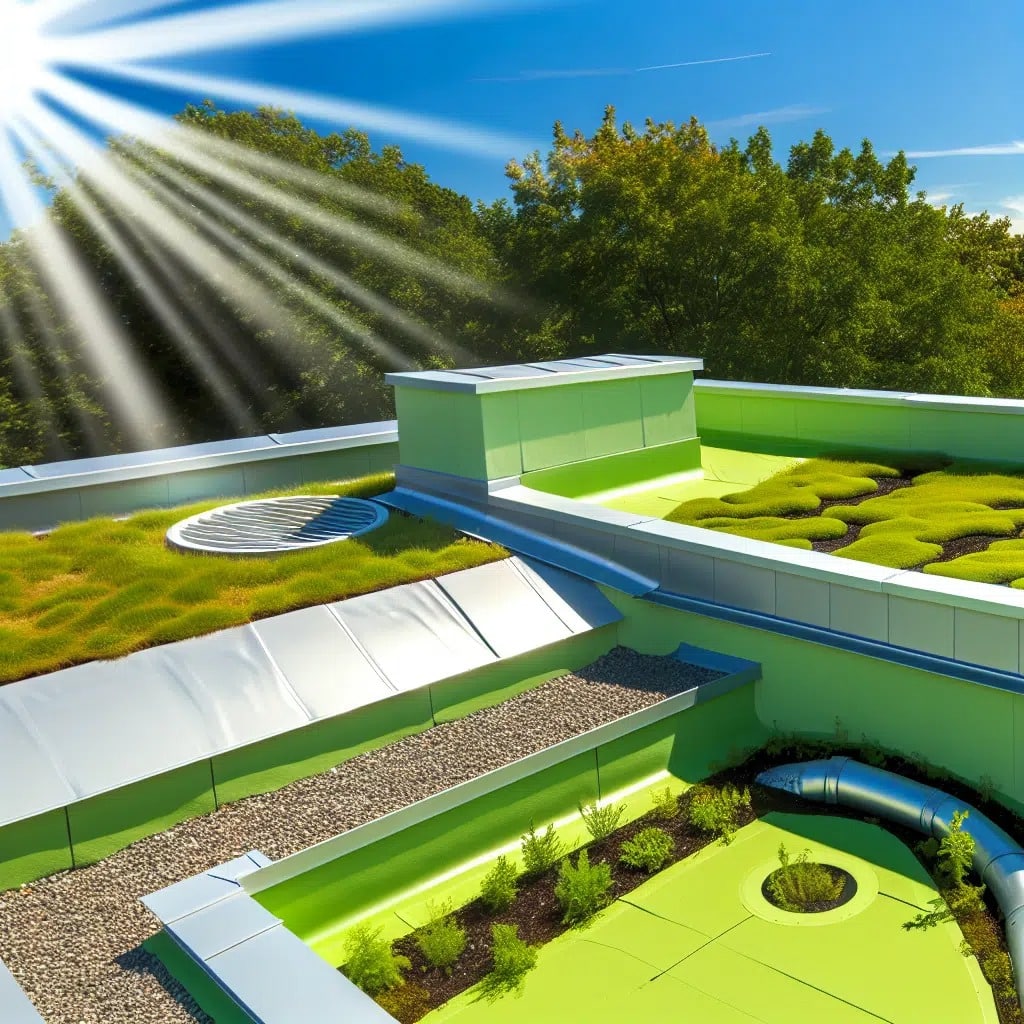Part 1: The Immediate Need for the Right Roof Tile Choice
The value of a secure and robust roof cannot be overstated, yet it remains a component often overlooked by homeowners. It’s not just about aesthetics; the right types of roof tile can mean the difference between a home that’s safe and one that’s at risk. In Kingston, RI, where the seasons change with certainty, the urgency to choose wisely escalates as spring rains approach. A mistaken choice can lead to water damage, structural issues, and unnecessary financial strain. As we delve into this crucial topic, our focus will be on equipping you with the knowledge to make an informed decision.
Roof tiles come in a variety of shapes, sizes, and materials, each with its unique characteristics and suitability for different homes. From the classic elegance of slate to the contemporary appeal of composite materials, the options are plentiful but can be daunting. Recognizing the weight each tile type brings to your roof is pivotal—opting for heavy slate tiles on a structure not designed to support such weight can have catastrophic repercussions. Thus, understanding the specific needs of your residence is not a matter to be taken lightly. This is why your roofing decision should not just be informed but also personalized.
The consequences of selecting an unsuitable roofing material can be far-reaching, affecting not only your home’s integrity but also your peace of mind. An uninformed decision could lead to leaks, mold growth, or in the worst cases, complete roof failure. Seeking professional advice early on ensures that you’re apprised of the best options for your situation, offering a defense against the unpredictable elements. In the upcoming sections, we will discuss how to navigate this complex landscape with ease, guiding you towards a decision that secures both your home and investment.
Part 2: In-depth Look at Roof Tile Types and Installation
In the quest to find the ideal roofing, understanding the materials at your disposal is crucial. From natural substances like slate and terracotta to innovative, synthetic options, each offers unique advantages to homeowners. Among these choices, the resilience of terracotta stands firm against severe weather, ensuring longevity. Meanwhile, the lightweight nature of synthetic alternatives makes them suitable for a variety of structures. To ensure you have access to the most suitable products, take the time to review our residential roofing options, which offer a range of materials expertly selected to suit Kingston’s climate.
Installation techniques are just as diverse as the materials themselves, varying not only based on tile type but also on the climate and the specific design of your roof. Proper installation influences the longevity and performance of your roof; thus, selecting a team experienced in Kingston’s complex weather patterns is vital. For roofs with a pitch over 3/12, it is essential to use a 30-pound felt or superior underlayment, which acts as an extra barrier against moisture. This seemingly subtle layer of protection can be the line of defense that prevents costly water damage. Choosing contractors who prioritize such details can ensure a durable and reliable roof.
Maintaining integrity with every installment is a guiding principle for top-tier contractors. The intricacy of planning and precision involved in the layout of tiles can safeguard your home against adverse weather. Ensuring each tile is secured and correctly overlaid is about more than aesthetics—it’s about creating a watertight barrier to protect your abode. This level of attention requires expertise—the kind that comes with dedicated professionals who value your safety and satisfaction. When looking for skilled installation experts, seek out teams with a strong record of precision and resilience.
Part 3: Solidifying Your Roofing Decisions
As the roofing industry evolves, so do the options for environmentally conscious homeowners. Green roofing systems are not just a trend but an investment in the future. They can significantly reduce energy consumption by providing natural insulation, leading to noticeable savings on utility bills over time. These eco-friendly alternatives, like solar tiles, also contribute to a greener planet while enhancing the curb appeal of your property. To explore these advanced options, consider browsing our green roof systems for an idea of how modern roofing can align with sustainable living.
However, innovation in materials is matched by the necessity for regular upkeep. Even the most robust roof tiles require periodic maintenance to retain their protective qualities. Simple actions like clearing debris, inspecting for damage, and ensuring proper drainage can extend the life of your roof. To mitigate larger issues, enlist services from reputable providers for regular checks and timely repairs. An ounce of prevention, as they say, is worth a pound of cure—especially when it comes to the shelter over your head.
To conclude, the journey to a perfect roof is nuanced and filled with decisions that can have lasting impacts on the safety and cost-efficiency of your home. We’ve discussed the importance of material selection and professional installation, along with the undeniable value of regular maintenance. As you move forward, remember that the choices you make today will protect your home for years to come. Trust in your decision-making, armed with the knowledge and expert advice provided, and rest easy knowing you’ve invested wisely in your home’s defense against the elements. Rinaldi Roofing stands ready to support you with expertise and trusted services to bring your roofing vision to fruition.
Tips From the Roofing Specialists
Tip 1:
Before installing roof tiles, it’s essential to consider the weight load of your chosen material. If you’re opting for traditional clay tiles, ensure your home’s structure can bear the weight to prevent future structural issues.
Tip 2:
Always take into account the climatic conditions of your area. For regions prone to high winds, selecting interlocking roof tiles can provide extra stability and resistance against harsh weather elements.
Tip 3:
Routine inspection and maintenance can significantly prolong the lifespan of your roof tiles. At least twice a year, check for cracked, broken, or missing tiles and address any issues promptly to avoid water infiltration.
Tip 4:
When it comes to energy efficiency, the color and material of your roof tiles make a difference. Light-colored or specially coated tiles can reflect more sunlight, reducing heat absorption and helping to lower energy costs.
Tip 5:
If you’re planning a roofing project, consider the long-term benefits of your material choices. Investing in durable and sustainable roof tile options such as solar or recycled-material tiles can offer long-term savings and environmental benefits.
Your Roofing Questions Answered
What is the best method for installing roof tiles to ensure a long-lasting, strong roof?
The optimal method involves using a durable underlayment, precise alignment, and securing tiles with appropriate fasteners to withstand weather conditions and time. Choosing an experienced installer is paramount to guaranteeing a quality build.
Are there specific types of roof tiles that are more suitable for varying weather conditions such as heavy rain or high winds?
Yes, interlocking concrete and clay tiles are ideal for high wind areas as they resist uplift, while slate tiles are excellent in heavy rain regions due to their low water absorption rate.
Can you explain the maintenance requirements for different types of roof tiles?
Clay and concrete tiles require minimal maintenance, just regular debris removal and inspections; whereas, slate tiles should be checked for cracking or breakage, especially after significant weather events.
How does the choice of roof tile material impact the overall energy efficiency of a home?
Materials such as terracotta can reflect sunlight to keep homes cooler, while heavyweight materials can offer better insulation, both leading to potential energy savings through reduced HVAC usage.
What should homeowners consider when selecting roof tiles for a new construction or roof replacement project?
Homeowners should assess the structural integrity of their building to support the weight of the tiles, local weather patterns for durability needs, and aesthetic preferences that align with the home’s design.



